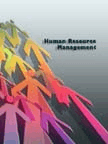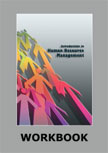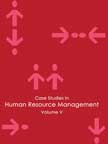Southwest Airlines' Organizational Culture
|
|
ICMR HOME | Case Studies Collection
Case Details:
Case Code : HROB021
Case Length : 15 Pages
Period : 1971 - 2001
Pub Date : 2003
Teaching Note : Available
Organization : South west Airlines
Industry : Aviation
Countries : USA
To download Southwest Airlines' Organizational Culture case study
(Case Code: HROB021) click on the button below, and select the case from the list of available cases:

Price:
For delivery in electronic format: Rs. 400;
For delivery through courier (within India): Rs. 400 + Shipping & Handling Charges extra
» Human Resource and Organization Behavior Case Studies
» HRM Short Case Studies
» View Detailed Pricing Info
» How To Order This Case
» Business Case Studies
» Area Specific Case Studies
» Industry Wise Case Studies
» Company Wise Case Studies

Please note:
This case study was compiled from published sources, and is intended to be used as a basis for class discussion. It is not intended to illustrate either effective or ineffective handling of a management situation. Nor is it a primary information source.
Chat with us

Please leave your feedback

|
|




<< Previous
"Culture is the glue that holds our organization together.
It encompasses beliefs, expectations, norms, rituals, communication patterns,
symbols, heroes, and reward structures. Culture is not about magic formulas and
secret plans; it is a combination of a thousand things."
- Herbert D. Kelleher, Co-Founder and Chairman, Southwest
Airlines.
Testing Times
|
After the September 11, 2001 terrorist attacks, Southwest Airlines (Southwest)
and the entire airline industry in the US faced devastating losses. Major
airlines rushed to the US Congress for relief in the form of federal assistance.
The industry was allocated $15 billion; a part of the relief came as outright
grants to cover the losses of operating revenue following the shut down of the
industry by federal order, while the rest was in the form of loan guarantees.
However, this assistance was not enough to pull the industry out of its heavy
losses. It continued to lose billions of dollars every day because of the
slow rate of passenger return.
|

|
To reduce their losses, the airline industry in the US cut the number of
flights by 20% and laid off 16% of their workforces in the weeks following
the attacks. However, one airline that responded differently to the crisis
was Southwest. The airline had its own unique approach to the crisis.
Southwest avoided layoffs altogether and stuck to its mission of caring for
its employees.
|
|
It was felt that avoiding layoffs in the face of a
dramatic decline in demand would jeopardize Southwest's short-term
prospects. The company was losing millions of dollars per day in the
weeks following the terrorist attacks. However, Southwest was
willing to suffer some damage even to its stock prices, to protect
the jobs of its people.
Southwest's no-layoff response to September 11 was a reminder to its
employees of the organization's tradition of caring for its people.
When asked to comment on this, an official explained, "Its part of
our culture. We've always said we'll do whatever we can to take care
of our people. So that's what we've tried to do."1 |
Southwest Airlines' Organizational Culture
- Next Page>>
|
|









